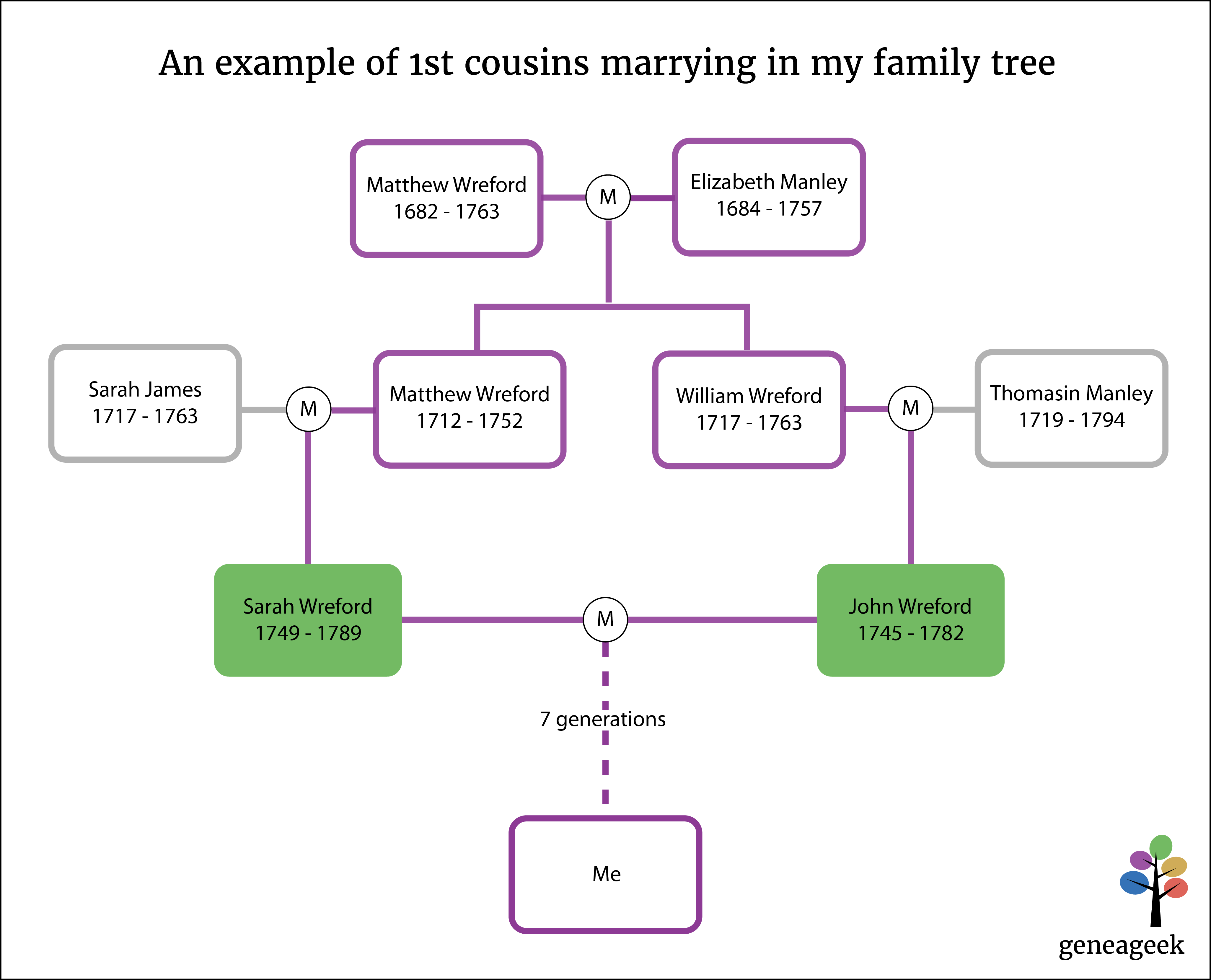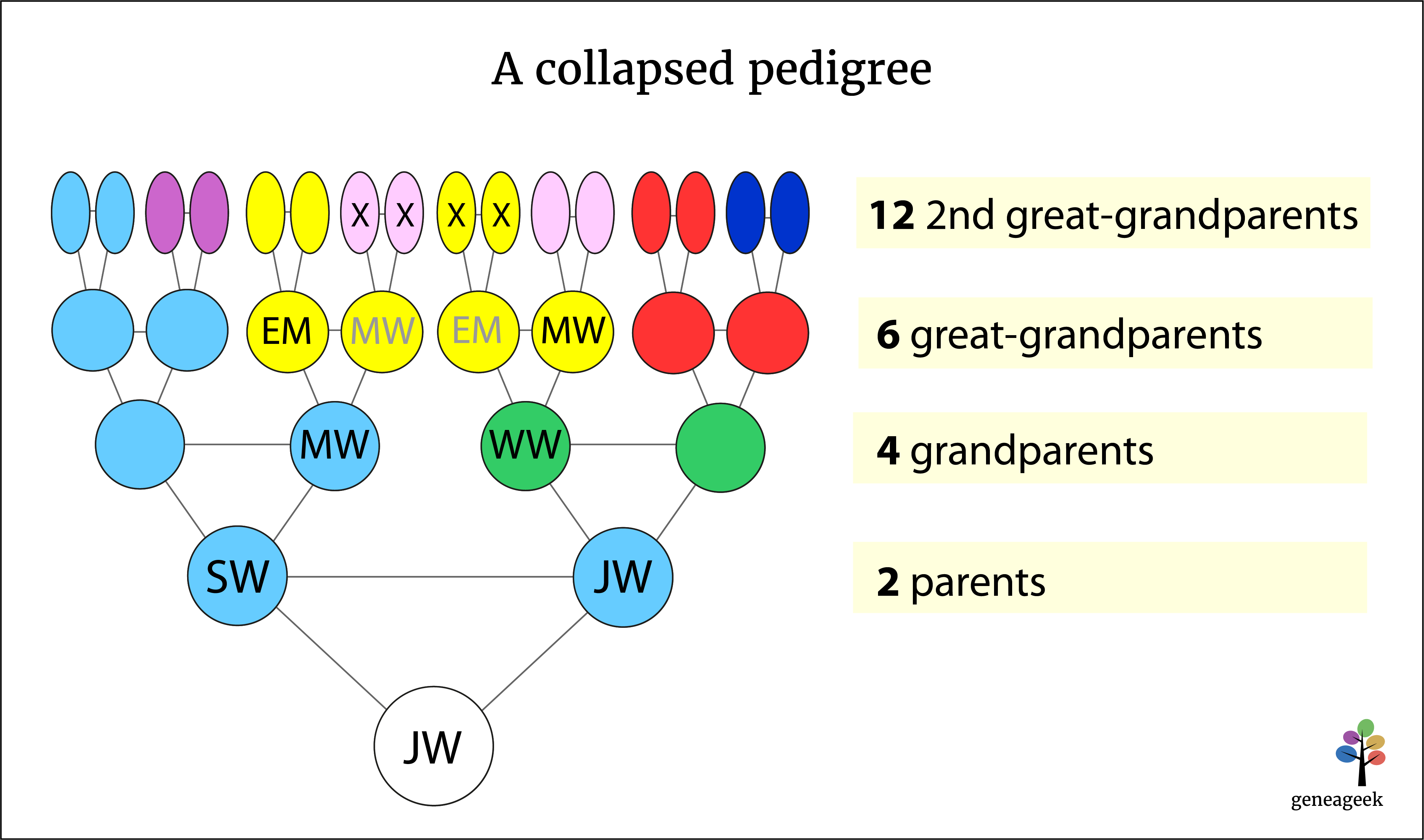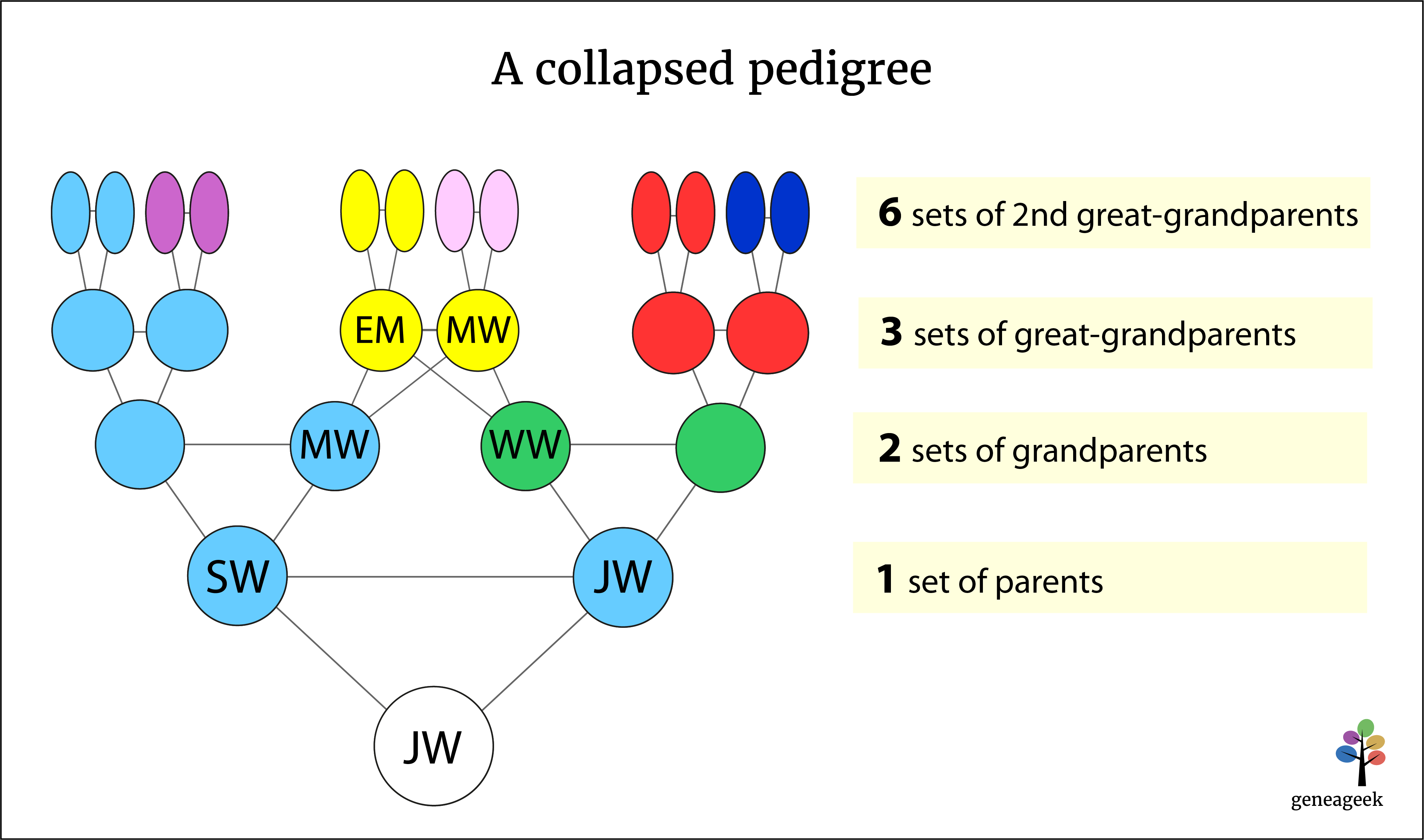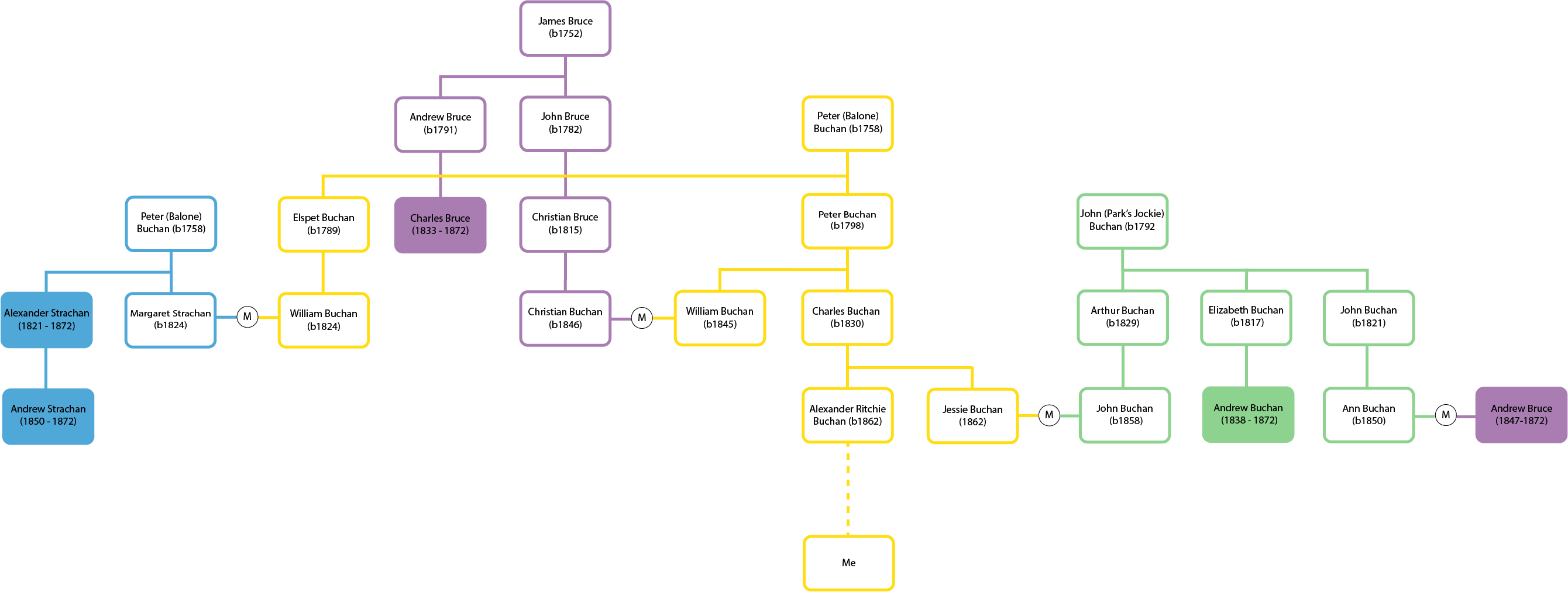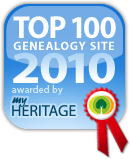Cousin marriage is given the side eye these days but it was a relatively common thing for our ancestors. It seemed to happen a lot with the Wrefords in Devon, and the Buchans in North East Aberdeenshire, but I’ve actually only been able to find it once in my direct ancestral line (so far).
Way back in the mid 18th century, my 6th great-grandparents, Sarah Wreford and John Wreford, married. Sarah and John were 1st cousins – their fathers were brothers.
This kind of situation leads to what is known as ‘pedigree collapse’.
A typical pedigree assumes each set of parents are unrelated to each other and each generation doubles (since each person has 2 parents).
Pedigree collapse occurs when two people who share ancestors reproduce.
This is demonstrated in the pedigree of Sarah and John’s son (and my 5th great-grandfather), John Wreford:
Instead of having four distinct sets of great-grandparents, Sarah and John’s children had only three.
Their children had only 6 great-parents instead of 8; 12 second great-grandparents instead of 16; 24 third great-grandparents instead of 32; and so on. (The number of ancestors lost each generation doubles: 8 -2; 16 -4; 32 -8; etc.)
This got me wondering. What knock on effect would 2 less ancestors have on my overall ancestor count?
My pedigree is typical until the 11th generation, where I lose 2 8x great grandparents. So instead of 1024 8xGGP, I have 1022; instead of 2048 9xGGP, I have 2044 ; instead of 4096 10xGGP, I have 4088; and so on.
My ancestor count (so far) looks like this:
| Generation | Relationship | Typical Number | My Number | Ancestors Lost |
| 1 | Me | |||
| 2 | Parents | 2 | 2 | |
| 3 | Grandparents | 4 | 4 | |
| 4 | 1x Great grandparents | 8 | 8 | |
| 5 | 2x Great grandparents | 16 | 16 | |
| 6 | 3x Great grandparents | 32 | 32 | |
| 7 | 4x Great grandparents | 64 | 64 | |
| 8 | 5x Great grandparents | 128 | 128 | |
| 9 | 6x Great grandparents | 256 | 256 | |
| 10 | 7x Great grandparents | 512 | 512 | |
| 11 | 8x Great grandparents | 1024 | 1022 | -2 |
| 12 | 9x Great grandparents | 2048 | 2044 | -4 |
| 13 | 10x Great grandparents | 4096 | 4088 | -8 |
| 14 | 11x Great grandparents | 8192 | 8176 | -16 |
| 15 | 12x Great grandparents | 16384 | 16352 | -32 |
| 16 | 13x Great grandparents | 32768 | 32704 | -64 |
| 17 | 14x Great grandparents | 65536 | 65408 | -128 |
| TOTAL | 131070 | 130816 | -254 |
Further calculations will need to be made if/when I find more kissing cousins.

